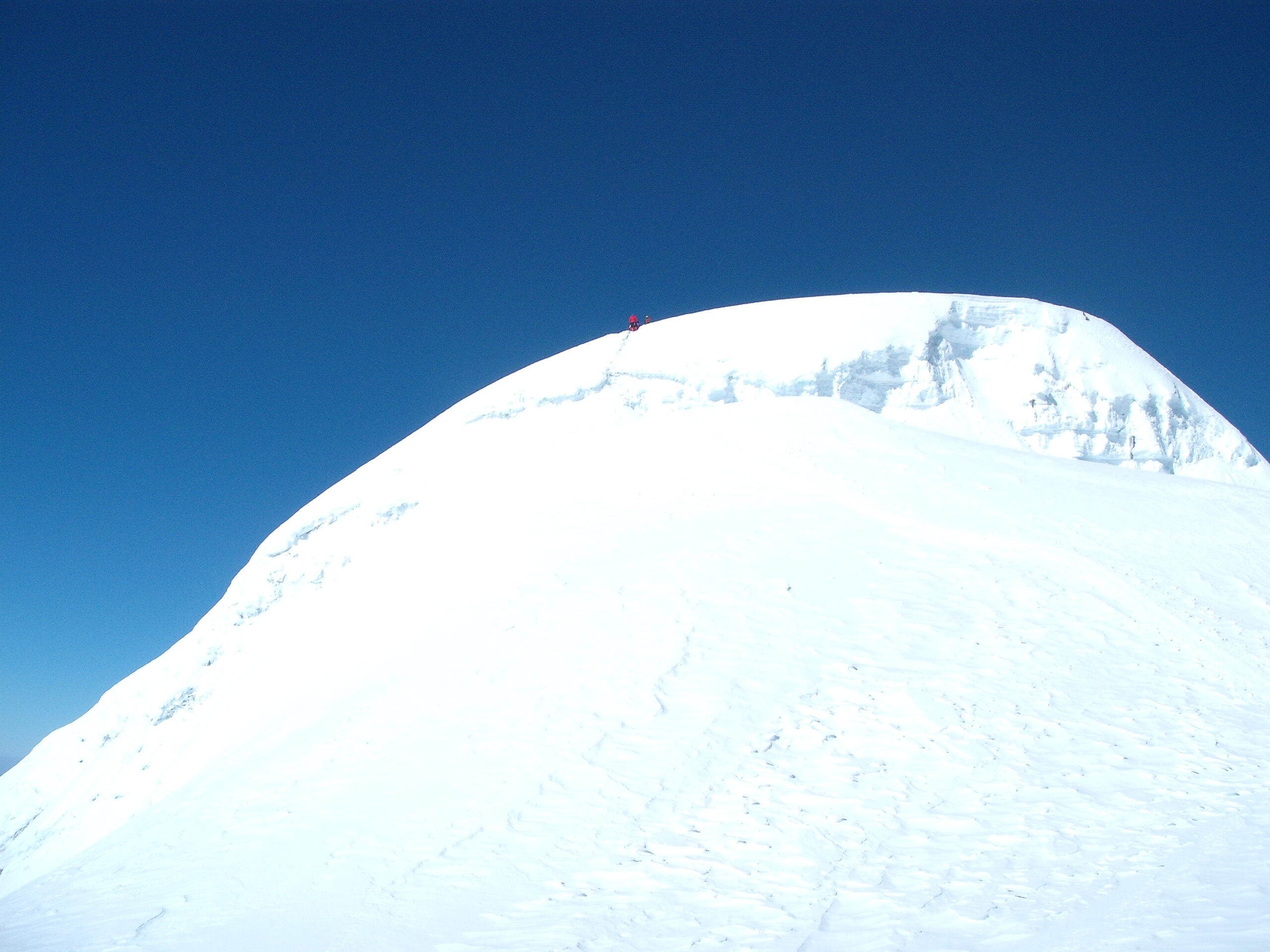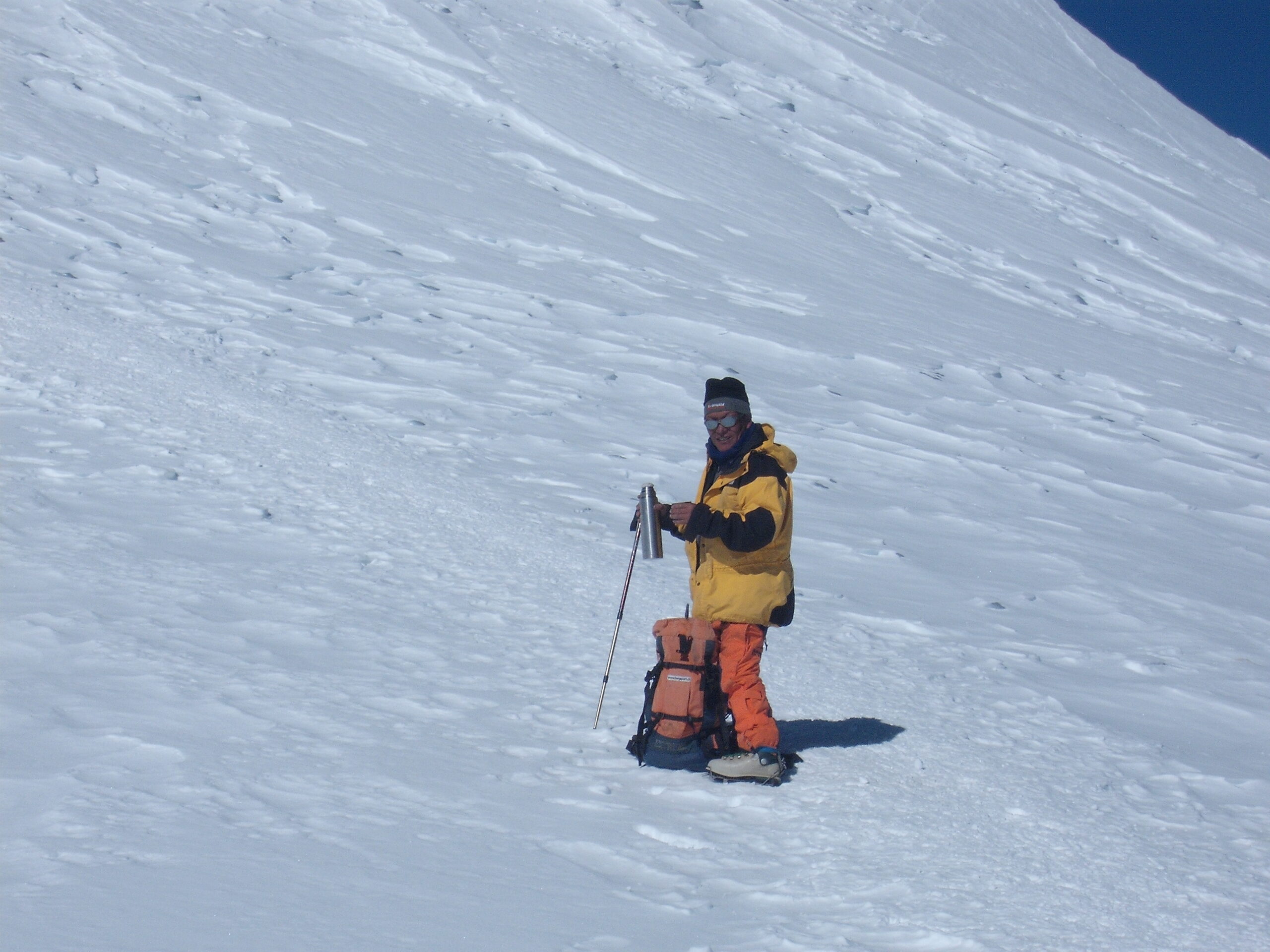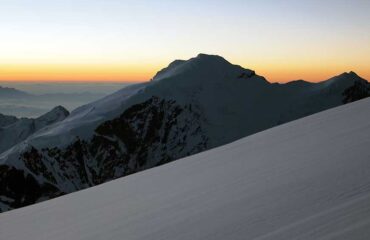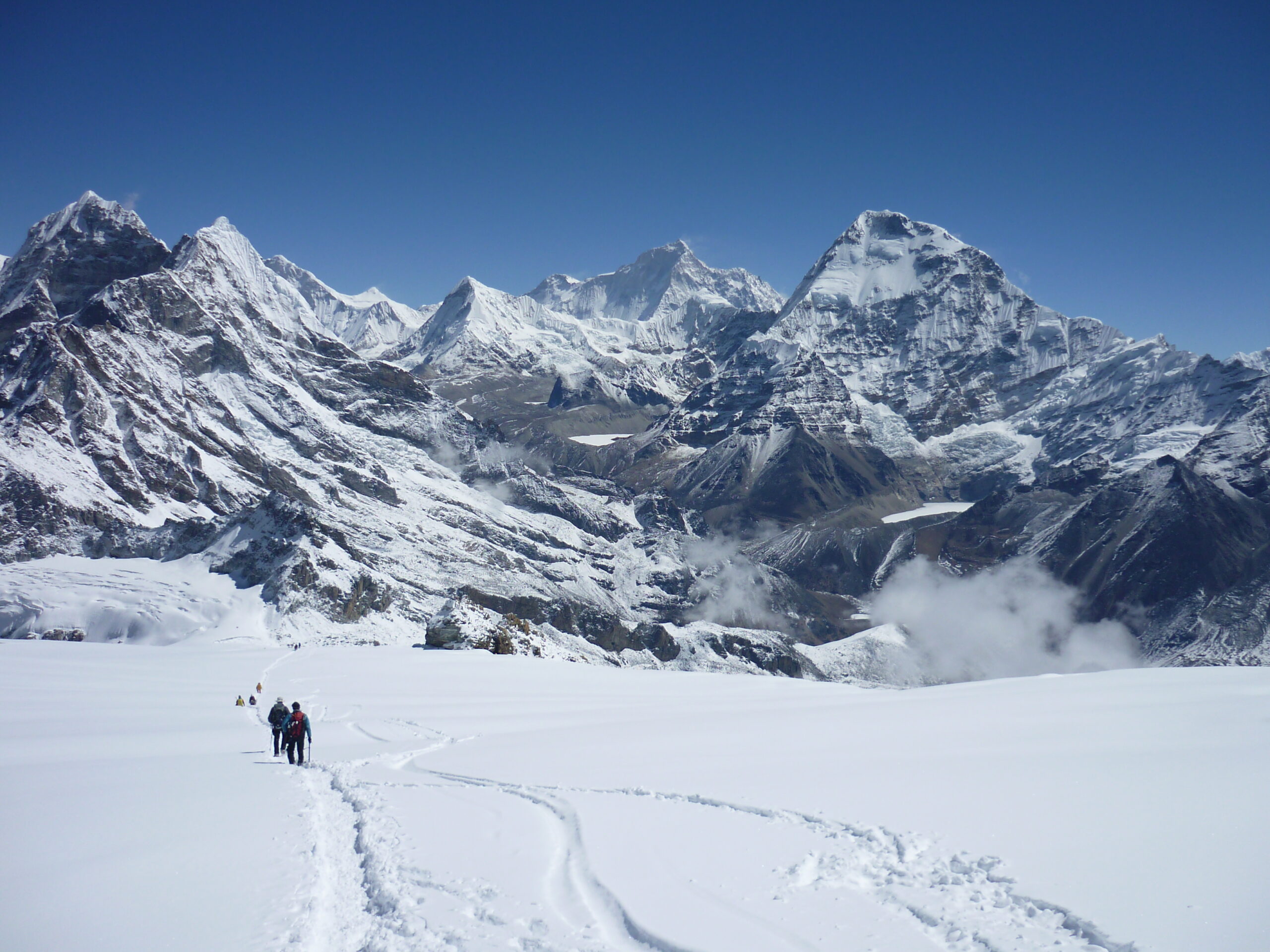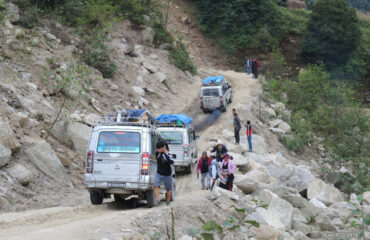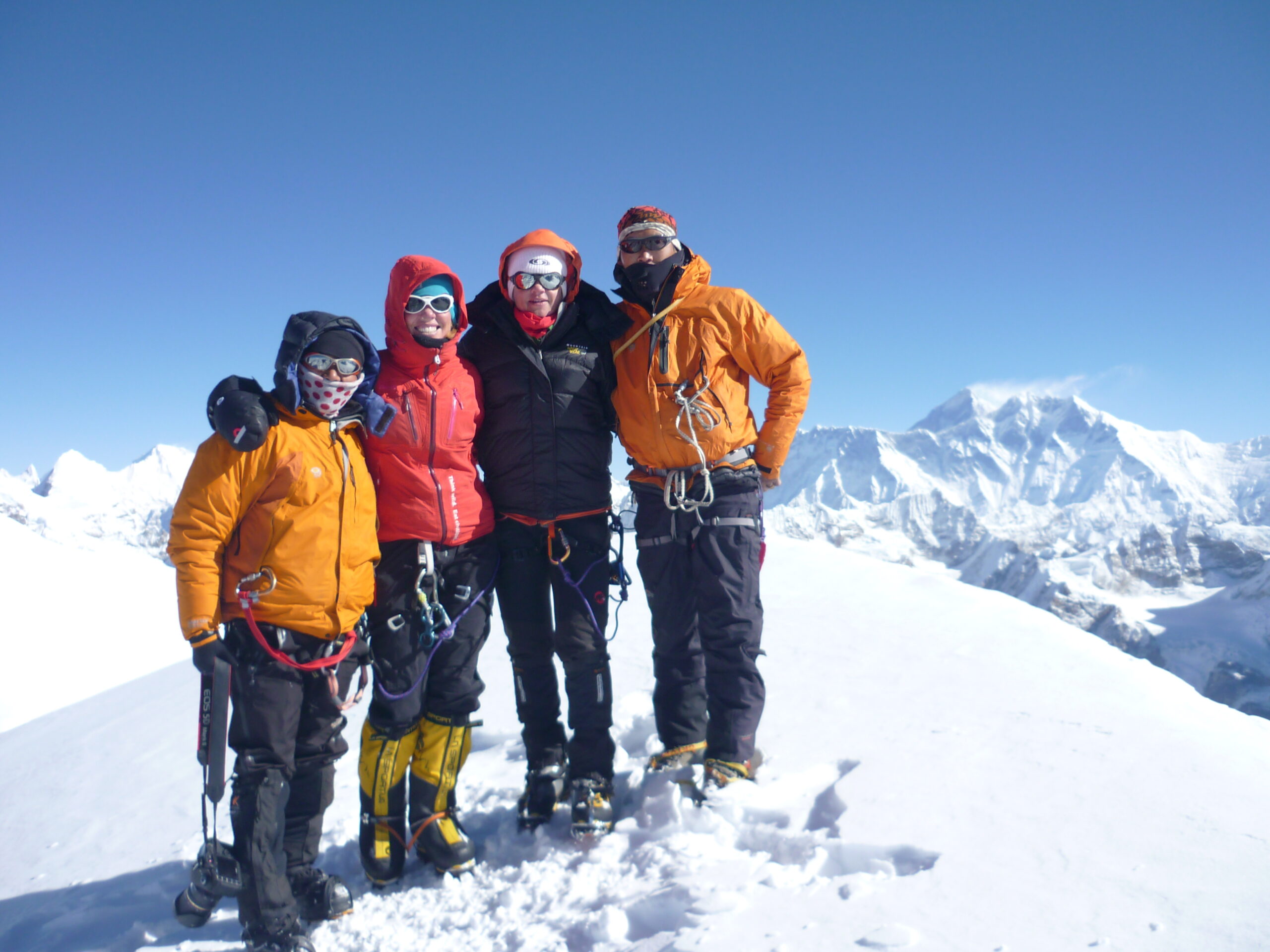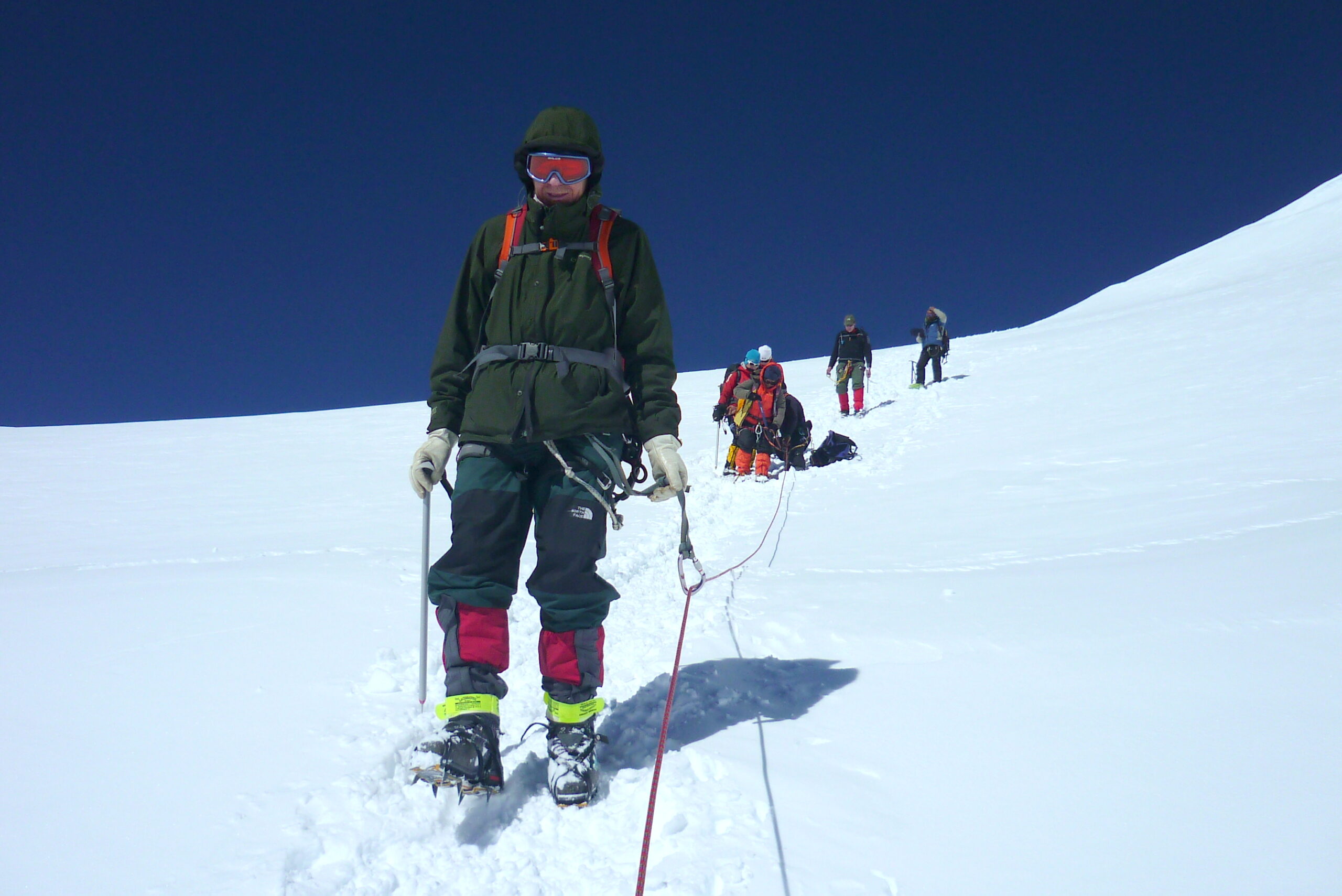Mera Peak Climbing via Phaplu
fromAn expedition to the highest trekking peaks unfolds the most exceptional panoramic views of five 8000 meters mountains including Everest.
-
Reviews 0 Reviews0/5
-
Vacation Style Holiday Type
-
Hiking
-
-
Activity Level Strenuous
-
Group Size Medium Group
Mera Peak climbing offers an exclusive opportunity to summit the highest trekking peak of Nepal at 6476 meters with excellent views of eight-thousanders like Makalu, Lhotse, Cho Oyu, Kanchenjunga including top of the world Mt. Everest. Mera Peak is one of the most alluring trekking peaks in Nepal as it involves a culturally stimulating journey through remote picturesque villages and forests, followed by a gentle climb to the summit. Mera Peak is perhaps best known because it is Nepal’s highest trekking peak and successful summits are rewarded with a spectacular panorama of five 8,000m peaks.
Although Mera Peak is very high, the climbing is straightforward. The quickest way to get to Mera Peak is via the Zatrwa La Pass. However, we trek into the mountain via a longer route, which provides better acclimatization. This also takes you off the beaten track and immerses the team in local culture along the way. We have designed our Mera peak itinerary in a professional manner with perfect acclimatization and contingency days. This trip is ideal for those with moderate mountaineering experience, a good level of fitness, and a keen sense of adventure who are not experts but still want to reach the top of a majestic mountain in the Himalayas.
Flexible Itineraries
There are several different routes to reach Mera Peak and the ending point within the lower Khumbu area that engages getting to Mera Peak. The Mera peak itinerary depends on a number of factors including mode of transportation, the route you take, and your time availability.
The usual durations (starting and ending in Kathmandu) are from 19 to 25 days depending on how long you’re planning for; we can craft a good tailored made trip based on how much time you have.
- Airport transfers and escort in Kathmandu
- All meals while on the trek (breakfast, lunch, dinner, hot beverage )
- Accommodation during the trek at the local lodge.
- Domestic airfares Kathmandu-Lukla-Kathmandu
- English speaking government-licensed Sherpa guide
- Climbing Sherpa & guide for climbing and mera peak ski
- Tents and equipment for base camp and high camp with full board service
- All the necessary trekking, climbing and ski permits
- National park and rural municipality entry fees
- Porter Service as required
- Staff cost including their (Salary, allowance, food, accommodation, summit bonus, and insurance )
- 3 nights accommodation at 3-star category hotel in Kathmandu on twin sharing basis with breakfast.
- All guided sightseeing tours in Kathmandu and entry fees.
- All ground transportation on comfortable private vehicle
- Certificate from Nepal Mountaineering Association after the successful summit
- All government and local taxes
- International airfare, departure Tax, and visa fees
- Trekking and climbing equipment
- Major meals, Lunch, and dinner during your stay in Kathmandu
- Any type of personal expenses, such as alcoholic beverages drinks, phone charges, and laundry.
- Rescue & travel insurance, trip cancellation costs, accident or health emergency, evacuation, loss, theft or damage to baggage, and personal effects.
- Tips & Gratuities to porters and guides
- We strongly advise you to take out personal travel insurance.
- Day 1 Depart Home Country
- Day 2 En Route (Transit)
- Day 3 Arrive in Kathmandu [1300 m/4264 ft]
- Day 4 Casual day and trip preparation
- Day 5 Drive to Phaplu (2413m/7916ft) 9-10 hrs
- Day 6 Drive to Kharikhola and Trek to Panggom [2850m/93,48ft]: 5-6 hrs
- day 7 Acclimatization and rest day in Panggom
- Day 8 Panggom to Nigmsa [2745m/90,003ft]: 4-5 hrs
- Day 9 Nigmsa to Chetrakhola [3150m/10332ft]: 7-8 hrs
- Day 10 Chetrakhola to Kothe [3600m/11808ft]: 6-7 hrs
- Day 11 Kothe to Tangnang [4,350m/14,270ft]: 3-4 hrs
- Day 12 Acclimatization Day: Hiking to Charpate Himal Glacier
- Day 13 Tangnang to Khare [5,045m/16,486ft]: 2-3 hrs
- Day 14 Khare: Acclimatization and pre climb training {5,045m/16,553ft}
- Day 15 Khare to High camp [5,780m/18,958ft]: 5-6 hrs
- Day 16 Mera High Camp to Summit [6,461m/21,1907ft] and back to Khare [5045m/16,547ft]: 8-9 hrs
- Day 17 Reserve day for Contingency
- Day 18 Khare to Kothe {3,691m/12,110ft} 4-5 hrs
- Day 19 Kothe to Thuli Kharka {4,300m/14,108ft} 5-6 hrs
- Day 20 Thuli Kharla to Lukla via Zatrwa La pass {4,600m/15,093ft} 6-7 hrs
- Day 21 Fly to kathmandu
- Day 22 Reserved day
- Day 23 Transfer to airport for final departure
- Day 24 En Route to home Country
- Day 25 Arrive Home Country
Having the right equipment on your adventure trips will make almost as much difference to your success, safety, comfort, and enjoyment as any physical training you do. It is essential that you take the time to acquire the correct gear; don’t wait for the last minute to find out your local shop doesn’t have your size. This equipment is expensive, but you can often find great sales online and at your local gear store. The purpose of this gear list is to help guide your purchases.
This list is a guide. While you are required to bring everything on this list, there are numerous options, brands, and versions of each piece of equipment, unless otherwise noted. Using our current suggested brand list we encourage you to shop around, do research, use your experience and the listed features to find the best gear for you.
During your time in the mountains, you will encounter a very wide range of temperatures and weather conditions. At one end of this range is the pleasantly warm and beautiful low land, while at the other end of the spectrum is found the cold and often windy weather of the highest peaks in the world. The equipment you bring must function well in a wide variety of conditions. Your clothing should be warm, lightweight, dry quickly, and allow good freedom of movement. The layering principle, based on several thin layers of insulation
(rather than one thick one), covered with an outer weatherproof shell, meets these needs well.
A Note on Packing
For your international flights, we recommend that you pack all your equipment in your two duffle bags. Do not simply pack your backpack (since the straps can be damaged by the baggage handling machines). It is important to lock these bags for their trip. Depending on the airport, you may be able to put your travel locks on after TSA has searched the bags. If not, Lock the bags with Zip Ties. If the TSA cuts off the zip-tie to search your bag, they will replace it. You will still need the travel locks to lock your bags in the hotel and during the expedition. Generally, you will take one duffel up to Base Camp, and leave one in the hotel in Kathmandu with your belongings for your time in the city. Your trek in duffel will only be accessible in the evenings (with items such as changes of clothing, sleeping bag), and your day pack will hold vitals such as water, layering, blister kit, and camera.
Important Notes:
- Don’t cut corners on the quality of gears
- Understand the function of each gear properly
- Acquire your gears well in advance
- Eliminate unnecessary luxuries
- Seasonal fluctuation will impact the requirement of gear
Tips:
- You can always rent gears if you are not willing to invest
- Check the sizes especially of boots before leaving for the mountain
- Wear summit socks while trying the boots.
Clothing
- Thermal Base Layers – Tops and Bottoms
- Heavy Base Layers
- Trekking Pants
- Hard-shell pants
- Down Pant
- T-shirts – Short and long sleeve
- Mid Layer Top
- Insulated Jacket
- Hard-shell Jacket
- Down Jacket/Parka
Footwear
- Double insulated mountaineering boots for climbing
- Hiking boots (Full and waterproof) for approach
- lightweight shoes for camp and around town
- Gaiters
- Flip-flops
- Wool/Synthetic socks
- Liner socks
Handwear
- Liner gloves
- Mid-weight gloves
- Down mittens
Headwear
- Cap/Sun Hat
- Buff
- Balaclava
- Warm wool/Synthetic Hat
- Eye Wear (Full coverage around eyes and nose)
- Ski Goggles
Climbing Gears
- Helmet
- Ice Axe with a waist leash
- Mountaineering Crampons
- Lightweight Mountaineering Harness
- Carabiners (2 Screwgate and 2 Snapgate)
- Belay Device(ATC Guide or Figure 8)
- Ascender/Jumar
- Prussik /Accessory Cord
Backpacking
- Small pack (35-40 liters)
- Waterproof duffel bag
- Padlocks for the duffel bag
- Pack cover
Accessories
- Water Bottles: 2 bottles of 1 litre each with insulation cover
- Trekking poles
- Headlamp: 200-300 lumens with spare batteries
- Camera
- Power bank/Solar Charger
- Universal adapter
- Notebooks/Diary
- Pocket knife
Hygiene and first aid
- Skincare (Maximum SPF sunscreen and lip balm)
- Toothbrush, Toothpaste, Soap, Moisturizer
- Hand Sanitizer
- Toilet paper and wet wipes
- Personal first aid kit (Include personal prescriptions, high altitude medications, painkillers, first-aid tape, band-aids etc.)
- Water treatment
Others
- Comfort Foods (Bring snacks and foods you like to munch)
- Travel clothes to wear in Kathmandu
- Sleeping bag (-20 degrees sleeping bag)
- Inflatable mattress
Climbing Mera peak itself is not very technical and doesn’t consist of a steep technical climb but the high altitude reaching 6461m at the summit makes this a challenging climb. Unlike other trekking peaks in Nepal, the climb to Mera peak is straightforward.
We recommend climbing Mera Peak in late April, May, late September, October, and November. We find that when we climb on Mera Peak, generally the best months are May and October. If you decide to climb in late March, early April or late October into November, you need to be ready for colder conditions.
There are several peaks, and among them, Mera Peak is one of them. It provides the view of five 8000 er including Everest. The peak gives a close-up view of Mount Everest, Cho Oyu, Makalu, Kanchenjunga, and Lhotse


